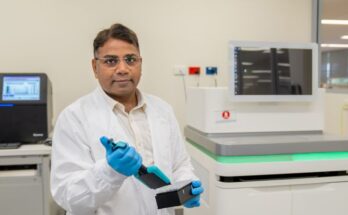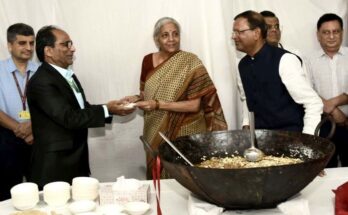The Indian Council of Agricultural Research (ICAR) runs Mera Gaon Mera Gaurav programme to promote direct interface of scientists with the farmers to accelerate the transfer of information from lab to land. The objective is to provide farmers with required information, knowledge and advisories on regular basis on region-specific farming. Under the programme, a team of scientists from ICAR-Central Marine Fisheries Research Institute (ICAR-CMFRI), Kochi, reached out to an upstart agrarian couple Hema Vijayakumar and Vijayakumar of Pazhoor, Piravom in Kerala.
In an area of around 2347.26 sqm with laterite soil they started integrated organic farming of vegetables along with ornamental plants, variety of trees, medicinal plants, cash crops, poultry, cattle rearing and aquaculture. The challenge was to convert the hilly area with laterite soil, which is more apt for rubber plantation, to a fertile productive land suitable for integrated farming with horticultural plants. It became more challenging when the couple decided to make it fully organic cultivation.
Technical knowhow
The ICAR-CMFRI extended technical knowhow to the agrarian couple on integrated farming of fish, vegetable and horticultural crop by a recirculatory method. The couple was advised to rear genetically improved farmed tilapia (GIFT).
They constructed a natural pond with red stone at the bottom. Hema and Vijayakumar started fish farming by purchasing 2,570 nursery-reared GIFT seed from Marine Products Export Development Authority (MPEDA).
The 5-month feeding schedule was: 1st month 0.6mm 3 times/day, 2nd month 0.8mm 3 times/day, 3rd month 1.2 mm 2 times/day, 4th month 2.5mm 2 times/day and 5th month 4.0mm 2 times/day up to satiation.
The water quality in fish tank, inlet and outlet was regularly monitored, which is also fitted with automatic timer control system round the clock.
Fish grew faster immediately after the stocking, and increased to three-fold from November to December 2017. Within 5 months, it reached to the size of 500 gms. The couple faced regular fish mortality due to increase in ammonia level in the pond. Necessary advisories were given by ICAR-CMFRI to maintain ammonia under safe level by using recirculation of water through Azolla plant and calcium carbonate and to improve the plankton bloom by slow leaching of dried cow dung manure. It was also suggested to the farmer for providing in situ recirculation. For maintaining pond pH, 6 kg common salt and two banana plant cut into pieces, were added into the water and average 7.5 pH was maintained. In a result, there were no instances of diseases.
Having less fertility of the soil, the farmer included a ‘Vechur’ breed cow and poultry along with fisheries and horticulture. Urine and dung from the cow were used in the plants to improve productivity. They were also used for vermi-composting along with the dried leaves and the vegetable waste from the house. Local varieties of chicken are being reared which provide nearly 7-10 eggs/day. Kitchen and farm vegetable waste were also utilised as bio-fertiliser. Regular harvest of vegetable crops is being done.
In spite of facing several challenges of marketing of their produce, their experiment and achievements are proving a success. The expected annual income from the pond, if two crops each of 6 months period is taken is around Rs 6 lakh (live tilapia can be sold at Rs. 250-300/ kg) and the income from vegetables, fruits and cash crops is around Rs 3 lakh. Thus, the total turnover from this venture could be around Rs 9 lakh/year.
Hema and Vijayakumar received lots of appreciation for their untiring effort to take up organic agriculture along with fish culture in the hilly area. The local municipality has recognised them as model farmers of the area who could motivate many of the small and marginal farmers to take up this venture.
Organic agriculture and aquaculture in hilly area




